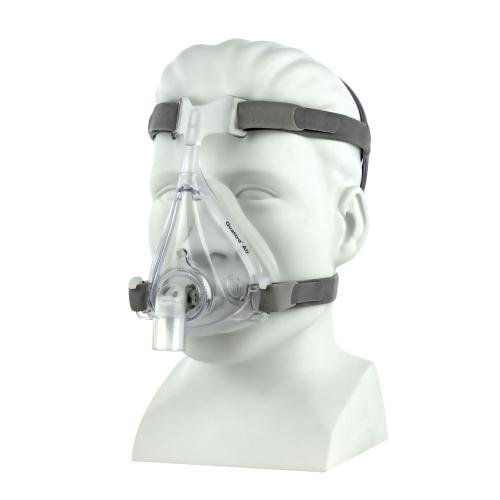Rehabilitation is a critical component of recovery for individuals facing physical injuries, chronic illnesses, or mental health challenges. Starting the rehabilitation process early is widely recognized as one of the most effective ways to improve outcomes, accelerate progress, and enhance the overall quality of life. However, despite its importance, many patients face significant obstacles that delay or hinder their ability to begin rehab promptly. Understanding these benefits and barriers can empower patients, caregivers, and healthcare providers to navigate the recovery journey more effectively.
The Benefits of Early Rehabilitation
- Faster Recovery Time Early rehabilitation can significantly shorten the recovery timeline. When patients begin therapy or treatment soon after an injury or diagnosis, they reduce the risk of complications such as muscle atrophy, joint stiffness, or the progression of mental health conditions. This proactive approach allows the body to rebuild strength, mobility, and functionality at a much faster rate than if rehab were delayed.
- Prevention of Secondary Complications Delaying rehabilitation increases the likelihood of secondary complications, such as chronic pain, depression, or reduced mobility. For instance, individuals recovering from surgery may develop scar tissue that restricts movement if therapy is postponed. Similarly, mental health conditions like anxiety or post-traumatic stress disorder can worsen without early therapeutic interventions. By initiating rehab early, patients can address these potential complications before they become significant barriers to recovery.
- Improved Mental Health and Motivation Physical and mental health are deeply interconnected. Starting rehab early fosters a sense of control and progress, boosting patients’ mental health. Many individuals report feeling empowered by actively participating in their recovery. The psychological benefits of early rehab include reduced anxiety, increased self-confidence, and improved emotional resilience, all of which are essential for long-term recovery.
- Greater Long-Term Functionality Rehabilitation that begins early often leads to better long-term outcomes. Early interventions focus on restoring normal function and preventing compensatory behaviors, such as favoring one side of the body due to pain or stiffness. Over time, these compensations can create imbalances and additional health issues. Early rehab ensures that patients rebuild strength, coordination, and functionality in a balanced and sustainable way.
- Enhanced Quality of Life Patients who start rehab early are more likely to regain independence, return to work, and participate in activities they enjoy. This improvement in quality of life not only benefits the individual but also positively impacts their family and community. The earlier the recovery process begins, the sooner patients can reclaim their lives and routines.
The Barriers to Starting Rehabilitation
Despite the numerous advantages of early rehabilitation, many patients encounter significant obstacles that prevent them from beginning their journey promptly. These barriers can be categorized into logistical, financial, psychological, and systemic challenges.
1. Logistical Challenges
- Access to Facilities: Many patients live in areas where rehabilitation facilities are scarce or nonexistent. Rural communities, in particular, often lack the infrastructure needed to provide specialized care, forcing patients to travel long distances to access services.
- Scheduling Conflicts: Patients with busy schedules or family responsibilities may find it difficult to attend regular rehab sessions. This is especially true for working individuals or parents who must balance their recovery with daily obligations.
2. Financial Barriers
- Insurance Coverage: One of the most significant barriers to early rehab is the cost. Many insurance plans offer limited coverage for rehabilitation services, requiring patients to pay out-of-pocket for extended treatments. This financial strain can deter patients from seeking early intervention.
- Hidden Costs: Beyond the direct cost of therapy, there are hidden expenses such as transportation, time off work, and childcare that can make rehab financially burdensome. These costs often compound, creating a significant obstacle for those on limited incomes.
3. Psychological Barriers
- Fear and Denial: Patients may delay rehab due to fear of pain, failure, or the intensity of treatment. Others may deny the severity of their condition, believing they can recover on their own without professional help.
- Stigma: There is often a stigma associated with seeking rehabilitation, particularly for mental health conditions. Patients may feel embarrassed or ashamed to seek help, fearing judgment from others.
4. Systemic Challenges
- Workforce Shortages: The demand for rehabilitation services often exceeds the supply of qualified professionals. In some regions, long wait times for appointments can delay the start of therapy, leaving patients in limbo during a critical period for recovery.
- Lack of Awareness: Many patients and caregivers are unaware of the importance of early rehab. Without proper education from healthcare providers, patients may not prioritize therapy, leading to delayed action.
5. Cultural and Social Obstacles
- Cultural Beliefs: In some cultures, seeking rehabilitation may not align with traditional beliefs or practices. Patients may rely on alternative medicine or family care instead of formal rehab, delaying or bypassing critical interventions.
- Support Systems: A lack of support from family and friends can also hinder patients from starting rehab. Without encouragement or assistance, patients may struggle to attend appointments or maintain their commitment to therapy.
Overcoming the Barriers
Addressing these barriers requires a multi-faceted approach that combines education, policy changes, and innovative solutions.
- Raising Awareness Healthcare providers play a crucial role in educating patients about the benefits of early rehabilitation. Clear communication about the risks of delay and the advantages of starting promptly can motivate patients to take action. Public health campaigns can also help destigmatize rehabilitation and emphasize its importance.
- Expanding Access Telehealth and virtual rehabilitation services have emerged as powerful tools to bridge the gap in access. By providing therapy sessions online, patients in remote or underserved areas can begin rehab without the need for travel. Mobile rehab units and community-based programs can also extend services to those in need.
- Financial Assistance Policy reforms are necessary to improve insurance coverage for rehabilitation services. Subsidies, grants, and sliding-scale payment options can make rehab more affordable for patients from all economic backgrounds. Additionally, employers could offer flexible schedules or financial support for employees undergoing rehab.
- Building Support Systems Encouraging family and community involvement can provide patients with the emotional and logistical support they need. Support groups and peer networks can also help patients feel less isolated, reducing stigma and fostering a sense of belonging.
- Streamlining Systems Reducing wait times and increasing the number of qualified rehabilitation professionals are essential to overcoming systemic barriers. Investments in training programs and incentives for therapists can help meet the growing demand for rehab services.
Getting Started With Rehab
Starting rehabilitation early is one of the most effective ways to improve recovery outcomes, prevent complications, and enhance quality of life. However, the road to early intervention is often fraught with obstacles, from financial constraints and logistical challenges to psychological and systemic barriers. By understanding and addressing these issues, patients and healthcare providers can work together to ensure that rehabilitation begins promptly and successfully. With the right support and resources, patients can overcome these barriers and build momentum on their journey to recovery.
*****



























